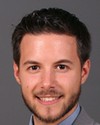Thank you very much for the opportunity to present today and for the opportunity to take what will be a first attempt to answer some of the questions you've laid out.
This is an area that I think is very close to governments provincially and territorially across the country, as well as to the federal government, which is probably the country's sixth-largest employer of health human resources and a very important vested player at the table.
I would say that a lot has changed in the last six to seven years. Where we were in the middle and late 1990s is no longer where we are now. We're in a very different situation in terms of data and in terms of the actions that have been taken across the systems.
Data are only half the story; what you do with the data is the other half, and actions that have been taken have increased the supply in very dramatic ways. There isn't a jurisdiction with educational capacity that hasn't increased that capacity quite dramatically across a large number of health care providers, from technicians to nurses and physicians.
There's been a huge change in not just the number, but also in who and how these providers are and what they do. We have the introduction of physician assistants in numerous jurisdictions, nurse practitioners, anesthesia assistants, clinical radiation specialists. The range and the roles of the health care providers in the system are fundamentally different from what they were just five or six years ago, as well as the overall supply.
How these people, these larger numbers with an increased scope of practice and a greater role, are working in the health care system is also fundamentally different from what it was before. It's much more team-based, much more patient-centred, much more driven by quality and by evidence, all of which is an opportunity to work to full scope of practice, to increase the quality of care, and to make the best use of the resources that we have in this increasing supply and in this range of numbers.
Compensation models and IT have followed in varying degrees across the jurisdictions as well.
So we have more, we have different, and we have them working in very different ways.
We also have a lot more data than we've ever had before. That data are coming from a variety of different mechanisms locally, regionally, provincially, and nationally. I think what's much more important is how we think about the data, and how we use the data is very different.
I actually did a very short and unsuccessful stint as a data modeller. I wasn't as bright as the folks at the end of the table, but our models used to be remarkably simple. If we have six general surgeons, and they are 50, in 20 years--punch it into Excel--they will be 70. If we have three of them in rural and three of them in urban and one in between, that means we need six more general surgeons. It's just a very strong supply.
One of the most important contributions that ACHDHR has done is to create a needs-based framework for thinking about HHR, which has led almost every jurisdiction in Canada to develop a new way of thinking and modelling. Every jurisdiction now has invested, I would say, often millions of dollars--I know in Ontario alone it's been several million--in developing not data alone, but actually different ways of using those data to do best predictions of what the population is going to need. Rather than driving this through saying, “Okay, we used to have ten plastic surgeons in downtown Toronto or downtown Calgary. Five of them plan on retiring; let's bring five more in”, we're actually looking at the needs of the population and then working back to look at the supply of a variety of health care providers. I think ACHDHR's framework has been absolutely influential in driving that forward.
Again, I would say that every jurisdiction has now driven far forward from where we were at the end of 1990s in terms of resources and in the sophistication of these models. It's also done nationally. I know we have a very robust nurse practitioner modelling. The CMA and others have done very robust physician modelling. There's been good modelling around other rehabilitation specialists as well, so it's a much more robust setting than we had.
I mentioned the framework, which I think was critical, because putting out a common template is very important. I would say that ACHDHR has been able to do two other things. One is it's been able to provide a forum that really brings together researchers, educators, and, as of about a year and a half ago, basically every major national player through an organization called HEAL, which is—




